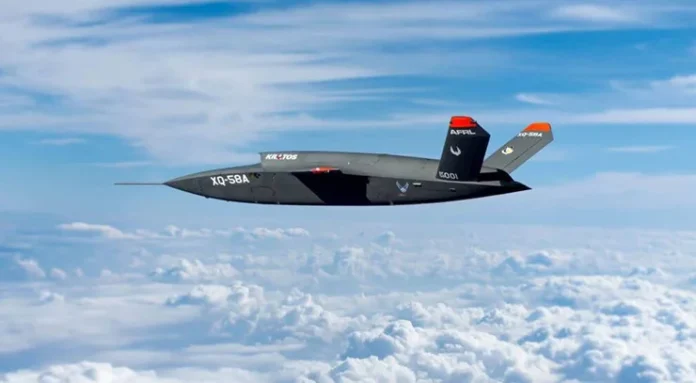New Delhi: In a bid to counter China’s growing power and its numerical advantage in personnel and military, the US military is planning to deploy thousands of drones within the next two years. The ongoing Russia-Ukraine conflict has brought into the global spotlight the significance of drones considering the way the Ukrainian military has effectively harnessed low-cost drones to confront the formidable Russian military.
In a speech early this week, US Deputy Secretary of Defense Kathleen Hicks outlining the ambitious plan announced that the United States military plans to start using thousands of autonomous weapons systems in the next two years.
“Beijing’s main advantage is ‘Mass: More ships. More missiles. More people.’ We’ll counter the PLA’s mass with mass of our own, but ours will be harder to plan for, harder to hit, harder to beat,” stated Hicks articulating the crux of Beijing’s advantage.
Noticing the new tactical shift, the United States is now focusing on integrating drones into future warfare strategies. The US Air Force is working on building a new generation of AI drones, with a target cost of approximately $3 million each. Considering the cost of AI drones vis-a-vis the cost associated with advanced fighter aircraft, the program has been aptly coined as “affordable mass.” One notable drone in development is the XQ-58A Valkyrie, which has a compact, stealth design and can carry various weapons. The Valkyrie is designed to act as a wingman to manned fighter jets and perform tasks such as reconnaissance and defensive manoeuvres. Its low cost and expendable nature make it valuable in high-risk missions.
As an experimental stealth unmanned combat aerial vehicle (UCAV), the XQ-58A Valkyrie has been designed and manufactured by Kratos Defense & Security Solutions under the United States Air Force’s Low Cost Attritable Strike Demonstrator (LCASD) program, which falls under the USAF Research Laboratory’s Low Cost Attritable Aircraft Technology (LCAAT) project portfolio. Initially designated as the XQ-222, the Valkyrie took to the skies for its maiden flight on March 5, 2019, at Yuma Proving Ground, Arizona.
Boasting a compact, single-engine configuration with a sleek blended wing-body design, XQ-58A’s major characteristics include stealth, high-speed performance, and high-altitude operability. The drone is outfitted with a number of sensors, including a radar and an electro-optical/infrared (EO/IR) camera. It may also carry a variety of weapons, such as air-to-air missiles and bombs.
The fundamental goal of LCASD program is to accelerate and reduce the cost of UCAV production by leveraging sophisticated design tools and commercial manufacturing techniques. The XQ-58A is designed to act as a devoted wingman, accompanying manned fighter jets on combat sorties and performing tasks like as reconnaissance, defensive manoeuvres, and enemy fire absorption.
The XQ-58A has an impressive maximum launch weight of 2,722 kg (6,000 lb) and a top speed of Mach 0.72. It has a range of more than 4,000 km (2,500 mi) and an endurance of more than 10 hours, with an operational ceiling of up to 13,700 m (45,000 ft). Furthermore, the XQ-58A can be built at a low cost, with a unit cost of $4 million at a production rate of 50 aircraft per year, potentially dropping to $2 million if manufacturing exceeds 100 airframes per year.
Designed to be a low-cost, consumable asset, appropriate for high-risk missions such as air defence operations, the design of the XQ-58A further prioritizes ease of repair and replacement. At present the XQ-58A Valkyrie remains in the developmental phase. It holds the potential to revolutionise the United States Air Force’s approach to warfare. Its cost-efficiency and expendable nature position it as a valuable asset in the landscape of future conflicts.
As a potential game-changer in the context of future conflicts, the XQ-58A Valkyrie stands as a significant advancement in the realm of unmanned combat aerial vehicles with its combination of cost-efficiency, stealth design, high speed, and altitude capabilities.





